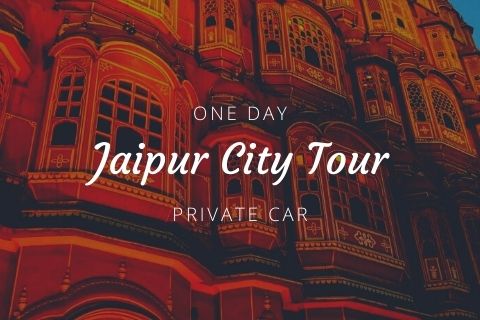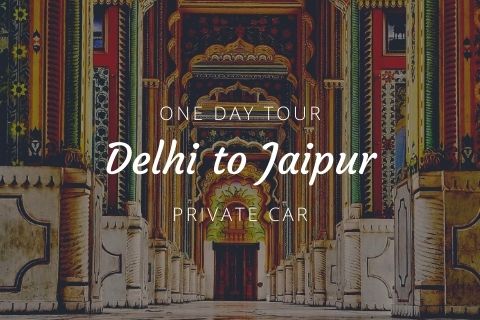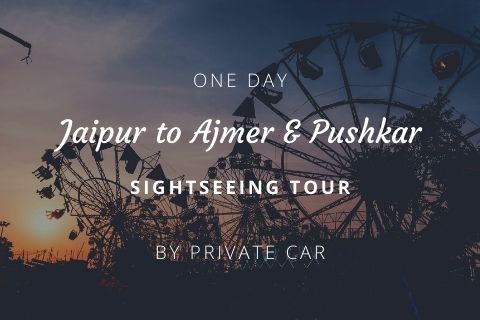City Palace Jaipur Phone
0141-4088888
Rating:  | 4/5 stars
| 4/5 stars
Based on total 27 reviews
City Palace Jaipur Address: Jaleb Chowk, Near Jantar Mantar, Tripolia Bazar, Gangori Bazaar, J.D.A. Market, Kanwar Nagar, Jaipur, Rajasthan, 302002, India
Jaipur Tour Packages
City Palace Jaipur Timings
| Day | Timing |
|---|---|
| Monday | 9:30 am – 6:30 pm (Day Visit) 7:00 pm – 07:30 pm (Night Visit) |
| Tuesday | 9:30 am – 6:30 pm (Day Visit) 7:00 pm – 07:30 pm (Night Visit) |
| Wednesday | 9:30 am – 6:30 pm (Day Visit) 7:00 pm – 07:30 pm (Night Visit) |
| Thursday | 9:30 am – 6:30 pm (Day Visit) 7:00 pm – 07:30 pm (Night Visit) |
| Friday | 9:30 am – 6:30 pm (Day Visit) 7:00 pm – 07:30 pm (Night Visit) |
| Saturday | 9:30 am – 6:30 pm (Day Visit) 7:00 pm – 07:30 pm (Night Visit) |
| Sunday | 9:30 am – 6:30 pm (Day Visit) 7:00 pm – 07:30 pm (Night Visit) |
City Palace Jaipur Entry Fee for Indian Nationals
| Museum | Composite | Museum at Night | |
| Adult | 300 | 400 | 500 |
| Child (7-12 years) / Students (with valid ID) | 150 | 250 | 250 |
| Adult (Senior/ Defence & Police with valid ID) | 150 | 250 | 200 |
City Palace Jaipur Entry Fee for Foreign Nationals
| Museum | Composite | Museum at Night | |
| Adult | 1000 | 1250 | 600 |
| Child (7-12 years) / Students (with valid ID) | 500 | 650 | 300 |
Jaipur is one city that transports you back to the Rajput era the moment you set foot there. It is dotted with architectural wonders and that is the reason why the city sees a good tourist footfall all year round. One such architectural delight right at the center of Jaipur is the City Palace; a symbol of the regal and royal days of the city.
City Palace is a building that has preserved the history of the city and is an icon of grandeur. Once you enter the palace all you can do is stand transfixed by its beauty while you soak in the marvelous architecture and the artifacts inside the palace. City Palace used to be the home for the royal family of Jaipur but later it was divided into two parts; one which contains few courtyards and museums and the other where the royal family still resides.
History of City Palace
City Palace was built by Sawai Jai Singh who headed the Kachwaha Rajput Clan and holds the credit of being the founder of Jaipur. The palace served as his residing throne and he started the construction of the palace way in the 17th century as he wanted to shift the capital of the state from Amber to Jaipur.
Raja Man Singh II was the last ruler of this dynasty to hold the throne in this palace. The beautiful structure was designed by architects Vidyadhar Bhattacharya and Samuel Swinton Jacob who brought a European influence to the design.
Image Gallery of City Palace Jaipur, India
Architecture of City Palace
The original structure of City Palace was built by Maharaja Jai Singh II who started with the outer wall. Over the decades since then, buildings and courtyards were added to the premises and so all the structures inside the palace date bear a different timestamp.
The architectural style of City Place is a beautiful mélange of Rajput, European and Mughal style. Built out of red and pink sandstone, this palace has vast courtyards surrounded by several arched smaller palaces. These small palaces have now been converted into museums and tourists can move around the palace either on their own or take a guided tour.
At several places inside City Palace, especially as you move from one courtyard to the other, you will see relics of the past like cannons and tall sculptures that catch your eye and make you stop to capture the image. Do not forget to admire the breathtaking structure of the palace as soon as you enter the main gate.
Inside City Palace
The gates of City Palace/ Pitam Niwas Chowk
City Palace has three gates leading to it; Tripolia Gate, Virendra Pol and Udai Pol. The main palace also has four smaller gates in the courtyard named Pritam Niwas Chowk which leads to the Chandra Mahal. It is believed that these gates were constructed to represent the four seasons and four Hindu deities namely Lord Vishnu, Lord Shiva, Goddess Parvati, and Lord Ganesha.
Mor in English means peacock and Mor gate represents the autumn season. There are intricate 3D images of peacocks on the gate which incidentally makes for a great background for taking pictures. Lotus Gate is the symbol of the summer season while Leheriya Gate denotes the spring season. Leheriya is a kind of print that is unique to Rajasthan and is worn by ladies in the spring season itself.
The last one called the rose gate is adorned with rose carvings and is symbolic of the winter season. All these gates are work of fine craftsmanship and are photographed quite a lot by tourists.
Mubarak Mahal
Translating to ‘Welcome Palace’ in English, Mubarak Mahal dates back to the 19th century and was built by Maharaja Madho Singh II for him to welcome his guests. The construction style of this Mahal also reflects traces of European culture as well since the Maharaja used to host several foreign dignitaries.
The mahal has now been converted into Maharaja Sawai Mansingh Museum and showcases an extensive collection of Pashmina shawls, robes and clothes of Sanganeri block print among other gorgeous outfits belonging to the royal family.
One of the exhibits here is the outfit of Maharaja Sawai Madho Singh I who was known for his small stature and heavyweight. The black and white photographs on the wall show the royal family even wearing some of the outfits on display. One such outfit is the black colored traditional dress with gota patti work, worn by the ladies of the royal family on the occasion of Diwali.
Chandra Mahal
Located on the western side of City Palace, Chandra Mahal has a grand peacock gate at its entrance. Paintings depicting the old city of Jaipur, floral carvings, and breathtaking mirror embellishments will leave you spellbound. This building has seven floors with each floor having been given a unique name like Ranga-Mandir, Sukh-Niwas, Mukut Mahal, Pitam-Niwas, Shri-Niwas, and Chhavi-Niwas.
‘Sukh Niwas’ is white with a little blue and just by being there fills you with a sense of peace and calm. ‘Rang Mandir' is the mirror floor and its walls, pillars, and ceiling are decorated with mirrors of all sizes. The dining room on this floor has its pillars and ceiling covered with Mughal motifs and royal dining tables. ‘Shobha Niwas’ has mirror walls with blue tiles and gold leaf designs.
The Maharajas of Jaipur used the ‘Chhavi Niwas’ as their monsoon retreat and it is equally beautiful as the other floors. At the top of the Chandra Mahal is the Mukut Mandir pavilion where the flag of Jaipur is unfurled every day.
You need a separate ticket for Chandra Mahal as most of it is still the royal family residence but the ground floor has been turned into a museum. You can witness glimpses of the history of the city through manuscripts, carpets, and artifacts that belong to the royal family.
The armory
Erstwhile known as Anand Mahal Sileh Khana or the Maharani Palace, the very first thing that catches your attention in this armory is the life-size structure of a horse that is wearing full-body armor like horses used to be when they went out on the battlefield with their rider.
The armory has a vast collection of weapons used by the Rajputs in wars. Knives, daggers, knuckle braces, and rifles are just some of the amazing things you will get to witness in this armory. Weapons like daggers have intricate carvings and inlay work on their handles which almost make you forget the bloodshed they must have witnessed when in use. Some of the exquisite weapons here are from the 15th century.
Bagghi Khana
Bagghi means a chariot and here you can see the various chariots and royal rides used by the royal family. You can also see the royal chariot which was used to transport the royal deity and a European styled cab which was gifted by Queen Victoria in 1876 to Maharaja Sawai Ram Singh II.
Diwan-e-Khaas
This is the royal darbar where the Maharaja used to hold a private audience with his courtiers. Photography is prohibited in this section of the palace. The royal throne known as ‘Takht-e-Rawal’, along with the chairs used by the courtiers adorns this hall, the ceiling of which is painted in a salubrious mix of gold and red.
The walls of this hall hold life-size paintings of the Maharajas of Jaipur, framed ancient texts, paintings, embroidered rugs, and handwritten original manuscripts of Hindu scriptures.
Diwan-e-Aam (Sarvato Bhadra)
Diwan- e- Aam is the open hall you see first when you enter City Palace. It used to serve as the hall for holding a public audience by the Maharajas of Jaipur. The hall has an intricately done ceiling with magnificent crystal chandeliers hanging from it.
This hall also has two gigantic silver urns which were known as Gangajalis, in glass boxes. These vessels have a capacity of 4000 liters and hold a place in the Guinness Book of World records. Legend has it these vessels were used by Maharaja Sawai Madho Singh II to carry the holy water of Ganges, on his trips to England.
Do not miss the gorgeous marble flooring of this hall or a giant chariot wheel mounted on the wall inside a glass case. This hall also has a few stalls from where you can shop for local handicrafts or traditional Rajasthani dresses.
Govind Dev Ji Temple
Dedicated to Lord Krishna, this temple on the premise sees a great number of devotees every day. The temple is thronged with people during Shri Krishna Janmashtami festival.
Entry Fees for City Palace
Since the palace is divided into two parts - the museum and the royal family residence, there are two separate tickets that you need to purchase for each part. You can also take a composite ticket which is applicable for both the sections.
For the museum and exterior - INR 300 for Indian adults and INR 150 for children 7-12 yrs, INR 1000 for adult foreigners, INR 500 for foreigner children 7-12 yrs
For night visit- INR 500 for Indian adults, INR 250 for children 7-12 yrs, INR 600 for adult foreigners, INR 300 for foreigner children 7-12 yrs
For a composite ticket- INR 400 for Indian adults and INR 250 for children 7-12 yrs, INR 1250 for adult foreigners, INR 650 for foreigner children 7-12 yrs
Entry timings for City Palace
- 9.30 AM to 6.30 PM (Day visit)
- 7.00 PM to 07.30 PM (Night visit)
Traveler Tips
1. You would need to walk a lot to cover the palace grounds so it is advisable to wear comfortable shoes. Since the palace is uncovered with large courtyards between different structures, wear comfortable clothing as well.
2. You can carry your water bottles although water facility is available inside the palace.
3. City Palace is disabled people friendly.
4. You can hire a guide in the local language but there are guides available here in several languages. You can even take the audio guide service.
5. You would need at least two to three hours to cover the entire palace.
6. Inside one of the museums, you can see the local artists displaying their skills like painting or jewelry making and you can purchase handicrafts from here.
7. Photography and videography are allowed in certain sections of the palace but it is restricted in sections like the royal darbar.
8. Best time to visit Jaipur is between September and March when the weather is pleasant.
How to reach City Palace in Jaipur
City palace is located between the local markets called Badi Chopar and Choti Chopar in old Jaipur. It is approximately 12 km from Jaipur Airport and about 4.5 km from the railway station. You can easily take an auto, taxi or a cycle rickshaw to reach the palace. You can also avail the service of top car rental companies in Jaipur and explore all the famous sightseeing places of Jaipur in the comfort of a private cab.
Jaipur has a lot to offer and to explore it in a relaxed and fun filled manner Jaipur Tourism, a division of Holidays DNA has created Jaipur Tour packages that help you plan your trip to the pink city in a relaxed and hassle free manner. These packages are designed keeping the budget and preferences of the travelers in mind. For further queries on the various packages, please fill the Contact Us form and we will get back to you.





